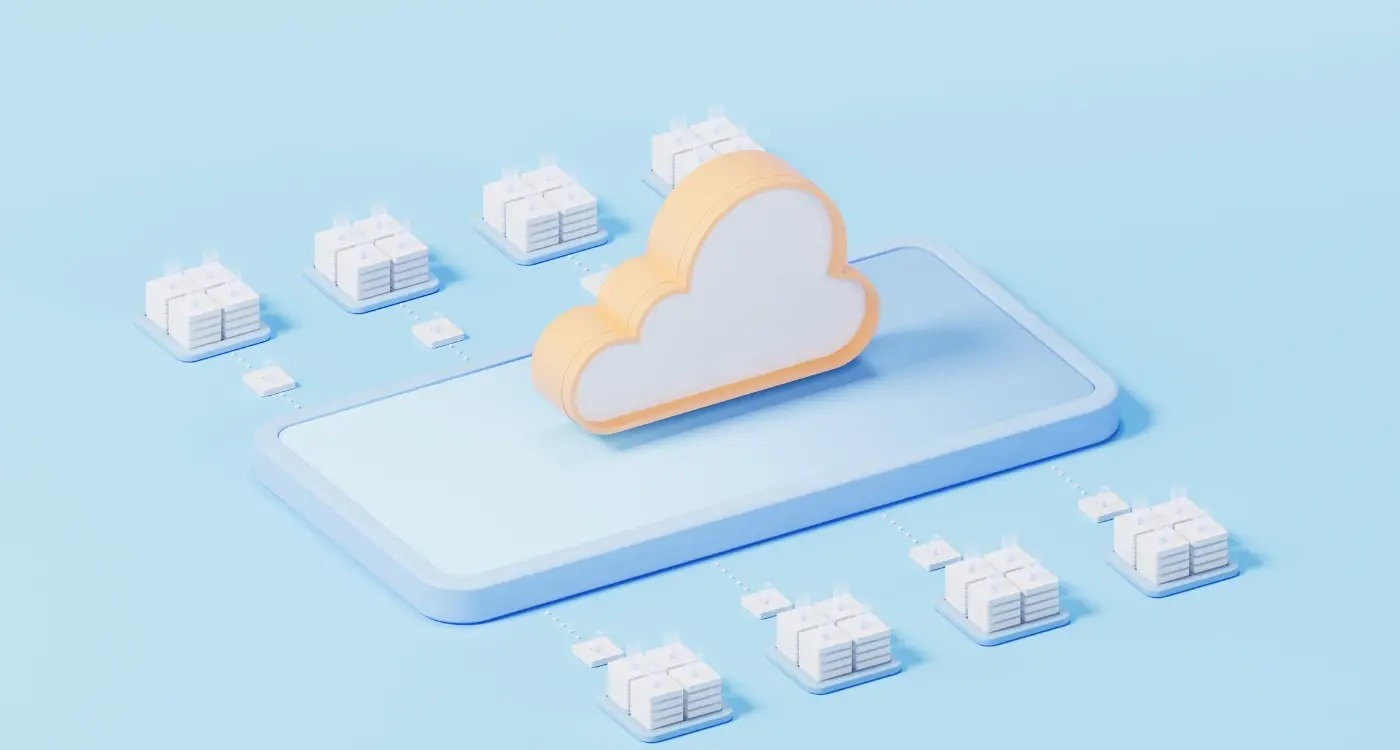How Does User Psychology Affect App Development Costs?
I've been working in psychology app development for over eight years now, and one thing that still surprises clients is how much user behaviour affects their development budget. Most people think building an app is just about coding features and making things look pretty—but that's only half the story. The real challenge lies in understanding how people actually think and behave when they use your app.
When someone downloads your app, they bring all their habits, expectations, and mental shortcuts with them. They don't read instructions; they tap buttons based on what feels right. They abandon apps that confuse them within seconds. This means every design decision—from button placement to colour choices—needs to be backed by solid psychology principles, and that takes time and money to get right.
The most expensive app isn't the one with the most features; it's the one that users can't figure out how to use
Understanding user behavior development cost means recognising that behavioural design pricing isn't just an add-on expense—it's the foundation everything else builds upon. When you skip the psychology research and testing phases to save money upfront, you often end up spending far more fixing usability problems later. This guide will show you exactly how user psychology impacts every stage of development and what that means for your budget.
Understanding User Psychology in App Development
After working with hundreds of clients over the years, I've learnt that most people think app development is just about coding and pretty designs. They couldn't be more wrong! The biggest factor that separates good apps from great ones is understanding how people's minds actually work when they use apps.
Think about it—when you pick up your phone and open an app, you're not thinking about the thousands of lines of code running behind the scenes. You're thinking about whether this thing is going to help you, entertain you, or solve your problem quickly. That's pure psychology at work, and it affects every single decision we make during development.
Why Your Brain Matters More Than You Think
People have incredibly short attention spans when using apps. We're talking seconds, not minutes. If someone opens your app and can't figure out what to do within those first few moments, they're gone forever. This means every button placement, every colour choice, and every word we use needs to work with how the human brain naturally processes information—not against it.
The Real Cost of Getting Psychology Wrong
Here's where it gets expensive. When developers ignore user psychology, they end up building features that nobody wants or interfaces that confuse people. Then comes the rebuild, the redesign, and the budget blowout. Getting inside your users' heads from day one isn't just good practice—it's good business sense.
How User Research Shapes Development Time and Budget
Here's something I wish more clients understood when they first walk through our doors—user research isn't just a nice-to-have that you can skip to save money. It's the foundation that determines whether your app development runs smoothly or becomes a costly nightmare of endless revisions.
When we skip proper user research, we're basically building blind. I've seen projects where teams spent months developing features that users found confusing or completely ignored. The result? Back to the drawing board, which means doubling your development costs and pushing your launch date back by months.
The Real Cost Breakdown
User research typically adds 10-20% to your initial budget, but here's the kicker—it can save you 40-60% in revision costs later. We're talking about understanding how people actually behave with your app before you build it, not after. The benefits of customer empathy in app development become clear when you see how much money proper user research can save you.
- User interviews and surveys: 1-2 weeks of research time
- Prototype testing: saves 3-4 weeks of development rework
- Behavioural analysis: prevents costly feature pivots mid-development
- Usability testing: catches expensive design flaws early
Start your user research during the planning phase, not after development begins. This single decision can cut your total project costs by up to 30%.
The psychology behind user behavior development cost is simple—people don't use apps the way we think they will. Research shows us the gap between our assumptions and reality, saving you from expensive surprises down the road.
The Psychology of Interface Design—Why Simple Costs More
Here's something that surprises most clients when they first see our quotes: the simplest looking apps often cost the most to build. I know, it sounds backwards doesn't it? You'd think fewer buttons and less clutter would mean less work, but that's not how psychology-driven design works.
When we strip away everything that isn't needed, what's left has to be perfect. Every single element on screen needs to serve a clear purpose and guide users exactly where they need to go. There's nowhere to hide poor decisions behind flashy animations or busy layouts.
What Makes Simple Design Expensive
- Multiple design iterations to get the perfect balance
- Extensive user testing to validate each element
- Careful consideration of white space and visual hierarchy
- Precise colour and typography choices that affect user behaviour
- Advanced micro-interactions that feel natural and intuitive
The Hidden Complexity
Behind every clean interface sits hours of psychological research and testing. We study how users' eyes move across screens, where they expect to find certain functions, and what colours make them feel confident about making purchases. Understanding why emotion is important in app design helps explain why this research phase alone can add weeks to a project timeline.
The payoff is worth it though—users spend more time in well-designed apps and are far more likely to recommend them to friends.
Behavioural Testing and Iteration Cycles
Here's something I learned the hard way—behavioural testing isn't a one-and-done affair. When we're talking about psychology app development, you're looking at multiple rounds of testing that can significantly impact your budget. Most clients think they'll test once, fix what's broken, and ship. That's not how human behaviour works though.
Each iteration cycle typically costs between 15-25% of your initial development budget. Why? Because real users behave differently than we expect them to. They tap buttons we didn't think they'd notice, ignore features we spent weeks perfecting, and find workarounds we never considered. These discoveries mean going back to the drawing board—sometimes multiple times.
The Reality of User Behavior Development Cost
I've seen apps go through six or seven testing cycles before getting the user flow right. Each cycle means developer time, design adjustments, and more testing. The good news? Apps that invest in proper behavioural testing typically see 40% higher user retention rates.
The cost of getting user behaviour wrong after launch is always higher than the cost of getting it right during development
Smart budgeting means planning for at least three iteration cycles from the start. This isn't pessimism—it's realistic planning that accounts for how behavioural design pricing actually works in practice.
User Experience Complexity and Technical Implementation
Here's something that catches many people off guard—the more natural and effortless your app feels to users, the more complex it becomes to build. I know that sounds backwards, but stick with me on this one. When users tap a button and something happens instantly, they don't see the dozens of technical processes running behind the scenes to make that magic happen.
When Psychology Meets Code
User psychology research often reveals that people want features like personalised recommendations, smart notifications that arrive at just the right moment, or interfaces that adapt based on their behaviour. Sounds simple enough, right? Wrong. Each of these "simple" psychological improvements requires sophisticated algorithms, machine learning capabilities, and complex data processing systems that can add weeks or months to your development timeline.
The Technical Reality
Take something as basic as making users feel like the app "knows" them. This might mean implementing user preference tracking, behavioural analytics, predictive algorithms, and dynamic content systems. Your development team isn't just building an app anymore—they're building an intelligent system that responds to human psychology. The result? Higher development costs, longer testing phases, and more potential points of failure.
The trick is finding the sweet spot between psychological appeal and technical feasibility within your budget constraints.
The Hidden Costs of Psychological Design Elements
Here's something most people don't realise about psychology app development—the elements that make users feel comfortable and engaged are often the most expensive to implement. I'm talking about those subtle animations that guide your eye, the perfectly timed notifications that don't annoy you, and the micro-interactions that make an app feel alive. These aren't just nice-to-haves; they're carefully crafted psychological tools that require serious development time.
Animation and Micro-Interactions
Take loading animations, for example. A simple spinner costs almost nothing to code, but a custom animation that reduces perceived wait time? That's a different story entirely. Your developers need to create multiple states, test timing variations, and make sure it works across different devices. What looks like a two-second animation might represent days of development work—and that's just for one screen.
Personalisation and Smart Features
Smart recommendations and personalised content are massive user behavior development cost drivers. Building systems that learn from user actions, remember preferences, and adapt the interface accordingly requires complex backend infrastructure. You're not just paying for the feature itself; you're investing in the data processing, storage, and AI capabilities that make it work.
Budget an extra 20-30% for psychological design elements during your initial planning phase—these features almost always take longer than expected to perfect.
The reality is that good behavioural design pricing reflects the invisible work happening behind the scenes. Users never see the A/B testing, the user flow optimisation, or the countless iterations that make an app feel intuitive.
Planning Your Budget Around User-Centred Development
After working with hundreds of clients over the years, I've noticed something interesting—most people think user-centred development costs more money. That's not quite right though. What it actually does is shift where you spend your money and when you spend it.
The old way of building apps was simple: design it, build it, launch it, then fix problems later. But fixing problems after launch? That's where the real expense kicks in. User-centred development flips this on its head by spending more upfront on research and testing, which saves you from costly mistakes down the line. Learning from what top app development companies do can help you avoid these expensive pitfalls.
Budget Allocation for User-Centred Projects
- User research and discovery: 15-20% of total budget
- Design and prototyping: 25-30% of total budget
- Development and testing: 40-50% of total budget
- Post-launch improvements: 10-15% of total budget
Compare this to traditional development where research might get 5% and post-launch fixes can eat up 30% or more of your budget. The numbers tell the story.
Planning Your Timeline
User-centred projects typically take 20-30% longer in the early phases but launch with fewer problems. This means your app gets to market in a more polished state, with better user reviews and higher retention rates. Understanding the key differences between so-so apps and stellar apps helps you see why that extra time investment is worth it—trust me on this one.
Conclusion
After working on hundreds of apps over the years, I can tell you that psychology app development isn't just some trendy buzzword—it's become the difference between apps that succeed and ones that disappear into the digital graveyard. The truth is, understanding how people think and behave will always cost more upfront, but it saves you a fortune in the long run.
When clients ask me about user behavior development cost, I always remind them that we're not just building software anymore; we're creating experiences that need to work with how people's brains actually function. That means more research, more testing, and yes, more money at the start. But here's what I've learned—apps built without considering user psychology end up needing complete rebuilds within a year or two.
The behavioural design pricing might seem steep when you see the initial quote, but think of it this way: would you rather spend money getting it right the first time, or spend twice as much fixing it later? I've seen too many brilliant app ideas fail simply because the team skipped the psychology bit to save a few thousand pounds. Don't make that mistake—your users (and your bank account) will thank you for investing in proper user-centred development from day one.
Share this
Subscribe To Our Learning Centre
You May Also Like
These Related Guides

How Much Does User Testing Cost For A Mobile App Project?

How Much Will Cloud Hosting Cost for My App With 1,000 Users?



